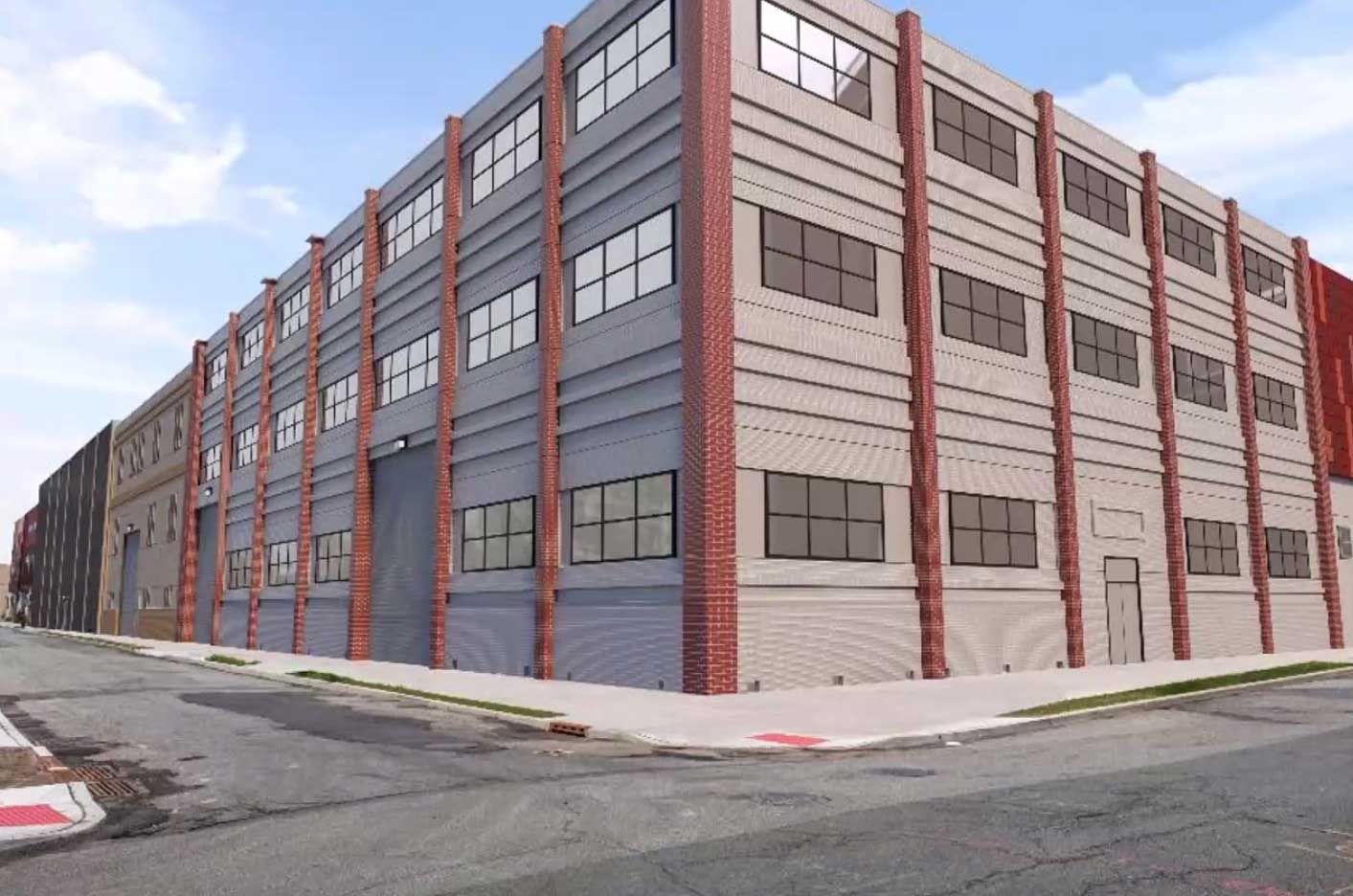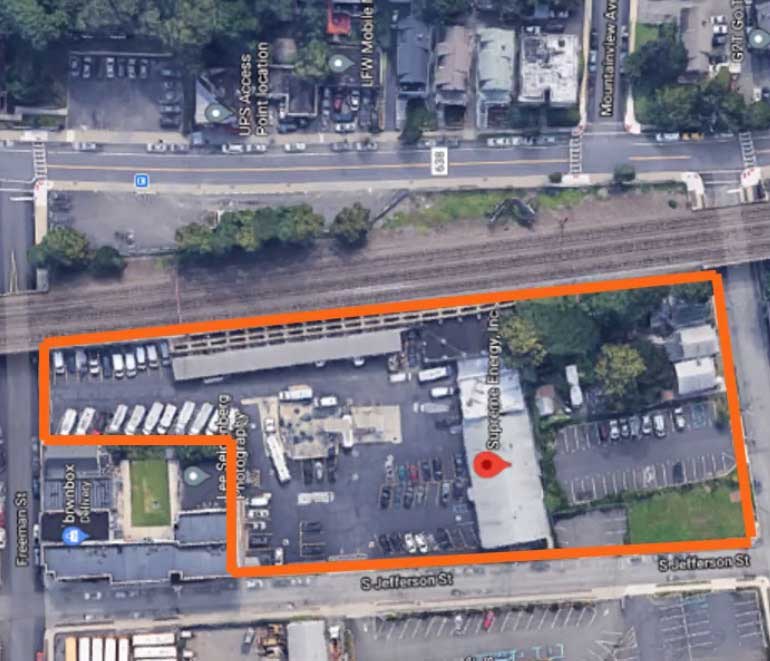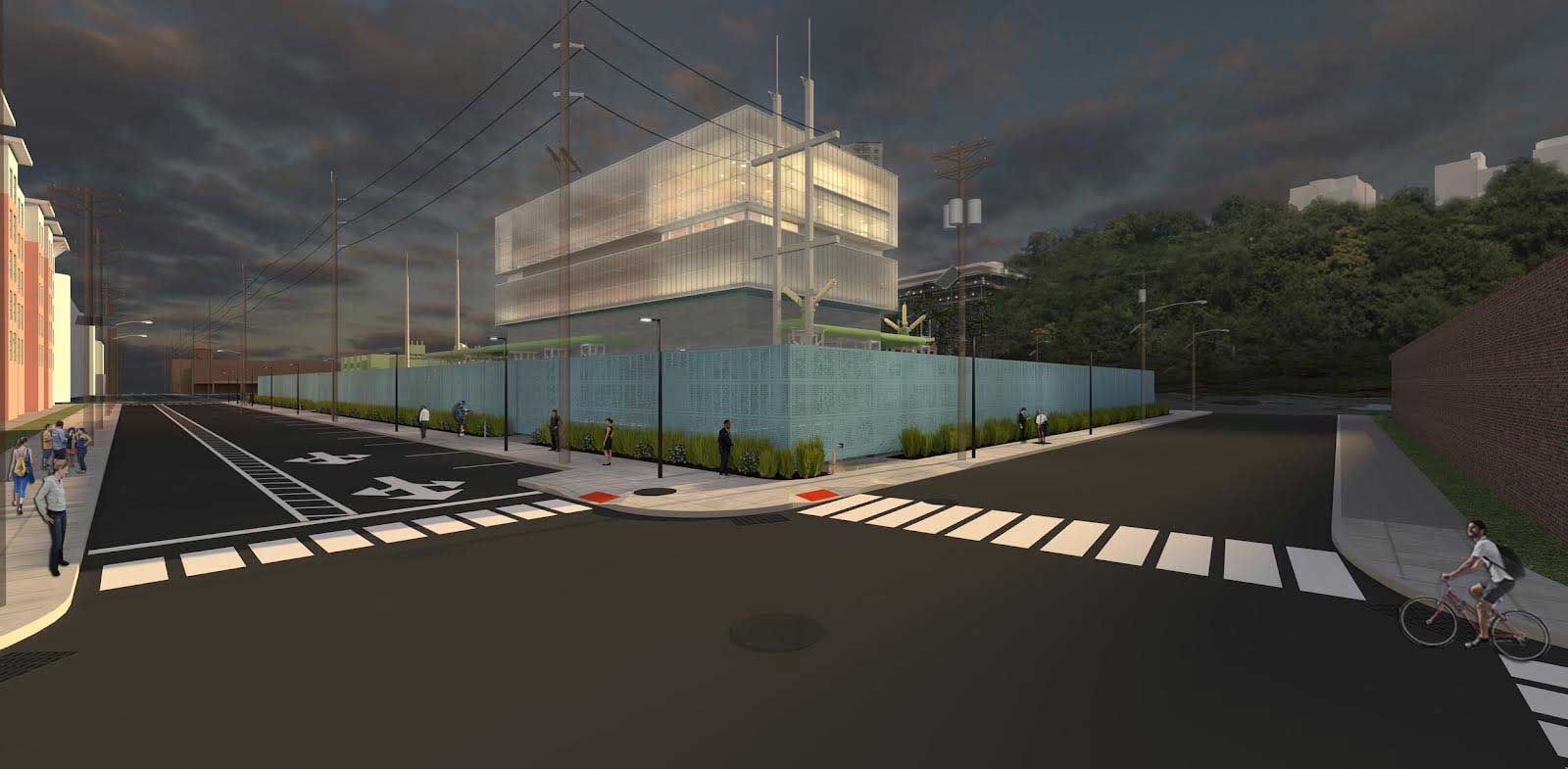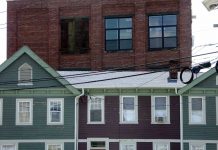
A proposed electrical substation in the Valley arts district of Orange has enraged locals over the severity of its design that some said resembles a penitentiary. The proposed PSE&G facility gobbles up almost an entire city block and is surrounded by a 50-foot-high perimeter wall that makes the street unsafe and unsightly, residents said.
“Our community is trying to build and uplift this specific area as a designated art zone,” said James Ward, a board member of Valley Arts, a local arts nonprofit. “People live there. Would you want to step out of your home and look at this facility? At night, would you feel safe walking down the street?”
Ward, who is running for city council, sees this power station as a potential foil to the neighborhood’s growth. PSE&G, meanwhile, claims the need for a substation is a direct consequence of that growth. “Orange is a growing community — it’s thriving — and we’re starting to see power constraints throughout the community,” Joe McQueen, regional public affairs manager at PSE&G, said at a public outreach event last week.

This new substation is part of PSE&G’s Energy Strong initiative, an $842 million investment that removes stations from flood-prone areas and upgrades the grid technology. The company chose this lot near Highland Station because it’s next to an existing substation, built-in 1970, which it will replace, McQueen said.
The company plans to present a finalized rendering at the planning board on Feb. 23, but McQueen couldn’t confirm whether the public would see the that version beforehand.
PSE&G would be receptive to community input, but there were limitations about what could be redesigned, McQueen said.
The task of fitting eight transformers and multiple access roads left the site “very constrained,” said Mark Oquist, senior architect at Burns & McDonnell, the firm designing the station. “It really was a bit of a puzzle to get everything to fit,” Oquist said.
“And I know it’s tall,” Oquist said, but argued it’s not “out of scale” with the neighborhood and it was designed to be contextual with existing buildings. “This is to provide visual continuity of the roofline of the existing buildings on the street and also to provide visual screening to the equipment behind it.”
Oquist said some aspects of the design likely couldn’t be altered, namely the location and size of overhead doors, the height of the walls, and the use of precast concrete on the facade to protect the equipment. “This station is intended to be here for a very long time,” Oquist said.

Green walls and murals designed by local artists were some of the ideas floated by attendees to soften the design of the substation. Some said the company’s recently built substation in Hoboken should serve as architectural inspiration while others wanted PSE&G to scrap the project altogether.
“Residents are upset, and as we went door to door, most of their concerns were that they didn’t feel involved in the process,” said Jamie Summers-Johnson, councilwoman-at-large, noting that her constituents said the facility resembled a detention center. “I would rather them be angry now then this building go up and then we’re stuck.”
The neighborhood was designated a redevelopment zone a decade ago and last year the zone was expanded north to Glenn Street and south to Beach Street. Among the goals spelled out for the district in a plan approved by the planning board was to “eliminate eyesores” and “create opportunities for entertainment, recreation, permanent employment.” The station, which operates without any employees present, achieves none of these objectives, critics said.
“You have a unanimous decision that nobody wants this,” Carlos Figueiredo, chief creative officer at Exploratory Creative, located in the arts district. “Can this be stopped? Or is this a done deal? Are we wasting our time?”
